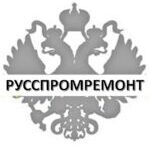Executor: «Agreed» «Science-production commercial company firm «GELION» Ltd Director D. Yu. Hanzhin
Customer: «Approve» «DL-trans» Ltd Head of transports’ technical operation department
Conclusion on the results of conducting pilot tests (testing) of RRC-technology (patent RF N 2266979)
In the period of the 2nd October 2018 — 5ths March 2019 checkout of the RRC-technology (patent RF N 2266979) was conducted on the car Mercedes-benz AXOR of «DL-trans» Ltd vehicle fleet of «Business lines» group of companies.
The checkout was realized by «Science-production commercial firm «GELION» Ltd – RRC-technology’ (patent RF N 2266979) Russian invention’ Licensee (SRN РД0195024 04.04.2016)
Test object: Truck tractor Mercedes-benz AXOR, SN В 543 НМ 178
Year of manufacture: 2012
VIN: WDB9440321L691940;
Number of engine: 457948 00 247007
Test period: One ICE interval, 902 054 km— 960 681 km
Testing aims:
1. Getting objective and error-free information about restoration and increase of transport units’ and mechanisms’ service life as a result of RRC-technology implementation.
2. Detection/confirmation of effectiveness of conducting a check on mechanic systems’ state and prevention of contingency and unplanned equipment failure due to the application of laboratory analysis method for applied power oils.
Testing goals: 1. Confirmation of predicated effects of RRC-technology such as:
– improving and maintaining units’ and mechanisms’ characteristics
– decrease of friction pairs’ dynamic wear and increase of their service life
– decrease in fuels’ and lubricants’ consumption
2. Estimate the possibility of: -monitoring by instruments (lubricant oil analysis) to identify the beginning of the processes of destruction of parts and mechanisms for taking the necessary measures;
– increasing the period of use of the applied oils through the analysis of the degree of degradation;
Car technical state before applying RRC, after applying RRC and total kilometers run between next ICE maintenance (interval 58 630 km) were estimated through computer diagnostics at service station «Global Track Service Ekaterinburg» Ltd of official dealer «DK RUS» Ltd of «Mercedes-Benz» brand and through extra tests by representatives of «Science-production commercial firm «GELION»
When taking measurements, the following was used:
Official dealer equipment:1.Compressometer; 2. Diagnostic program.
Executor’s instruments: 3. Vibration meter “Corsair++,” serial number No. 366, production of NPP “ROS”; 4. Fluke 59 MAX infrared thermometer, serial number S/N 39660284WS; 5. Smoke meter Мета-01МП01, serial number No. 22098; 6. Indicator of flow rate of quarry gases КИ-17999М, serial number No. 97;
Analysis of oil samples was performed by the accredited laboratory of «Ural Regional Center for Technical Expertise and Diagnostics» Ltd, Certificate of Accreditation No. РОСС RU.0001.22HP46 dated 29.08.2012
All measurements and subsequent control were carried out in accordance with the approved Program and Methodology for pilot industrial tests with DL-Trans LLC, Business Lines Group of Companies.
After the initial diagnostics and inspection, the oil in the internal combustion engine and the rear axle was replaced, after which the RRC was gradually inserted into the units and units of the TS: internal combustion engine, gearbox and rear axle, the fuel equipment was processed using the RRC in idle mode.
During the subsequent pilot operation of the vehicle, the processed units and units functioned in normal mode, without violations.
At the end of the research period (05.03.2019), the vehicle arrived at the service station of the official dealer of «Global Track Service Ekaterinburg» Ltd, where its diagnosis and the next planned maintenance were carried out.
Analysis of the tests obtained in the ash showed:
1. Increase of compression on cylinders from 0.2 to 1.5 bar;
2. Improvement of “Engine smoothness control: correction value” parameter by 0.29% – 92%. This parameter also reflects the recovery of the pump nozzles;
3. Equalization of temperatures on exhaust manifold branch pipes;
4. Normalization of smokiness;
5. Reduction of crankcase gas consumption by 2 times;
6. Alignment of axial vibrations to cylinders;
7. Reduction of wear dynamics according to oil analysis, according to primary data, by at least 1.57 times.
8. Values of physical and chemical parameters of used motor oil correspond to values of new oil;
9. Reduction of fuel consumption by 4.45%, taking into account geolocation of routes and cargo weight.
10. The total average fuel consumption on the waybills increased by 3.2% and amounted to 31.779 l/100 km. before RRC treatment and 32.835 l/100 km. after processing.
Conclusions: RRC-technology (patent N. 2266979) confirmed the declared effectiveness in restoring and increasing the resource (reducing wear dynamics) of transport units and mechanisms.






